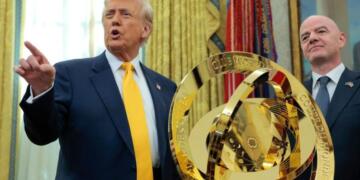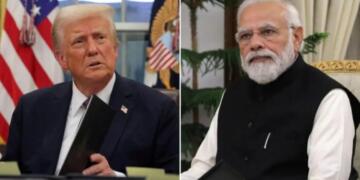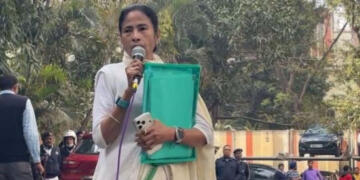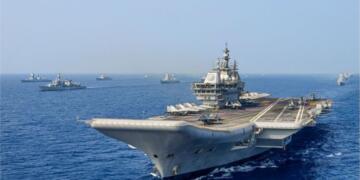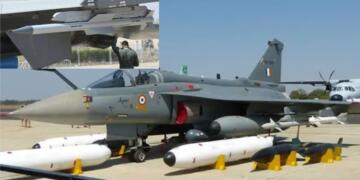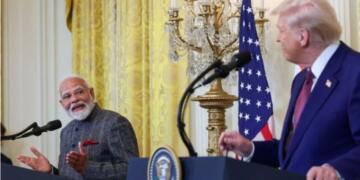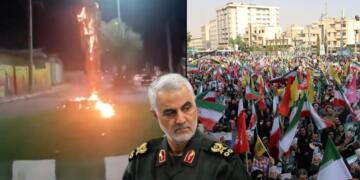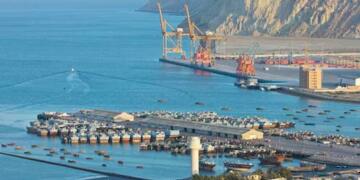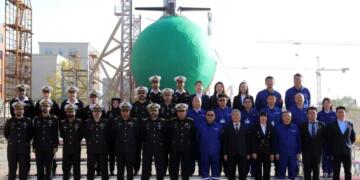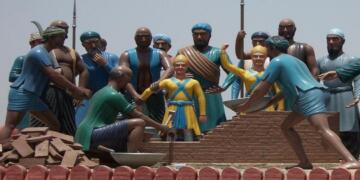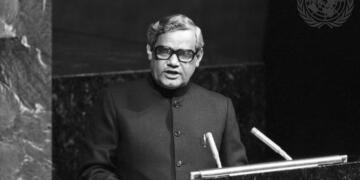India-Israel relations remain strong, but Israeli Ambassador Reuven Azar has sharply criticized Congress leader Sonia Gandhi for her recent remarks perceived as supportive of Iran. Amid rising tensions in the Middle East, Azar said it was “deeply disappointing” to see a senior Indian political figure overlook Iran’s decades-long record of regional aggression.
Ambassador Azar also expressed regret that Gandhi did not clearly denounce the brutal October 7 attack by Hamas on Israeli civilians. “It’s important for political leaders to respond responsibly. We were disappointed that she didn’t condemn the October attacks with the seriousness they warranted,” he said.
In an Op-Ed for The Hindu, Congress leader Sonia Gandhi condemned Israel’s June 13 military strike on Iranian territory as “illegal and a violation of sovereignty” and said India’s silence on the ongoing hostilities between Israel and Iran represents not only a diplomatic lapse but a departure from India’s “moral and strategic traditions”.
The airstrikes, which triggered a series of retaliatory drone and missile exchanges between the two regional powers, have since spiralled into dangerous escalations in the Middle East.
The envoy then went on to underscore the need to recognise Iran as the primary source of instability in the region.
He said, “Everyone is entitled to their views, but facts matter. For over three decades, Iran has backed terrorism, pursued nuclear weapons, and threatened its neighbors. Israel acted only because it had no other choice.”
As Donald Trump announced that Washington has joined Israel’s war against Iran with U.S. pilots dropping 30,000 pound bombs early Sunday on three Iranian nuclear sites, delivering what American military leaders believe is a knockout blow to a nuclear program that Israel views as an existential threat.
“We have completed our very successful attack on the three Nuclear sites in Iran, including Fordow, Natanz, and Isfahan. All planes are now outside of Iran air space,” Trump said.
Leaders across the world are pondering whether their is still a room for diplomacy.Azar said the diplomacy hinges entirely on Tehran’s actions.
“If Iran halts its nuclear and ballistic missile programs, stops threatening other nations, and ends its regional aggression, then diplomatic efforts can be revisited,” he stated, referring also to recent India-Iran engagements.
On the question of Israel Prime Minister Benjamin Netanyahu mulling to target Iran’s Supreme Leader Ayatollah Ali Khamenei, Azar remarked, “We are not ruling out any options.” He also rejected Iran’s claims that its nuclear facilities remain secure, saying Israeli and American strikes have significantly damaged critical infrastructure.
He warned that unless Iran agrees to remove enriched uranium from its territory, further action is inevitable. “Keeping enriched uranium is a threat not just to Israel but to global security. If they don’t act, consequences from Israel or the United States will follow,” Azar said.
Israel envoy lauded India’s broader approach to West Asia, calling it a nation that contributes constructively to peace and development. “India is viewed as a stabilizing force in the region,” he added.
India has expanded defence, trade, and intelligence cooperation with Israel in recent decades, it also maintains deep historical, civilisational, and strategic connections with Iran.
The Israeli strike, which targeted high-value Iranian military assets and installations, came at a crucial time as Iran and the United States had begun to show tentative signs of progress. Five rounds of nuclear talks had already been held in 2025, with a sixth round reportedly scheduled for later in June.
“History reminds us that Mr Netanyahu helped fan the flames of hatred that culminated in the assassination of Prime Minister Yitzhak Rabin in 1995, ending one of the most hopeful peace initiatives between Israelis and Palestinians,” the Congress leader wrote.
Sonia Gandhi also directed criticism toward US President Donald Trump, accusing him of disregarding his own intelligence community’s assessments in favour of aggressive posturing.
“Mr Trump has previously warned against endless wars and the power of the military-industrial complex. Yet he now appears to be repeating the same mistakes that led to the war in Iraq,” she wrote, referencing the claims about Iraq’s alleged weapons of mass destruction in 2003.
Gandhi’s article placed particular emphasis on India’s unique diplomatic position, with longstanding ties to both Iran and Israel.
Operation Midnight Hammer: How the U.S. Struck Iran’s Nuclear Facilities
In a powerful show of force, the United States launched a coordinated air assault targeting Iran’s nuclear infrastructure, deploying some of the most advanced aircraft and weapons in its arsenal.
According to General Dan Caine, Chairman of the Joint Chiefs of Staff, On mobilized 125 American military aircraft,seven B-2 Spirit stealth bombers, to carry out the mission. The operation focused on three major nuclear sites—Fordow, Natanz, and Isfahan—believed to be at the heart of Iran’s nuclear program.
At the center of the operation were the B-2 bombers, renowned for their stealth capabilities and ability to strike high-value targets deep inside enemy territory. These long-range aircraft are engineered to evade advanced radar and defense systems by reducing visibility across multiple spectrums—including radar, infrared, and acoustic detection.
Valued at around $2.1 billion per unit, the B-2 remains the most expensive aircraft ever built, combining low observability with the ability to deliver both conventional and nuclear payloads with pinpoint accuracy.
Though not officially confirmed by the White House, it is widely believed that the B-2s carried GBU-57 Massive Ordnance Penetrators during the strike. These “bunker busters” are specifically designed to neutralize underground facilities by piercing reinforced structures before detonation.
Weighing 30,000 pounds (around 13,600 kilograms), the GBU-57 can burrow through up to 200 feet of concrete or rock before exploding. Its delayed detonation maximizes structural damage, making it ideal for targeting hardened nuclear sites like Fordow.
The bomb, developed by the Air Force Research Laboratory with design and testing support from Buoy,20 feet long and has a diameter of 2.6 feet. Reports suggest that a dozen GBU-57s were used during Sunday’s strike, delivering a crippling blow to Iran’s underground enrichment facilities.


